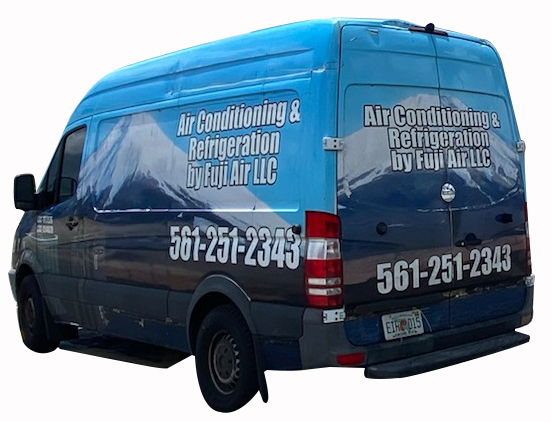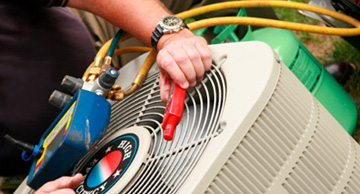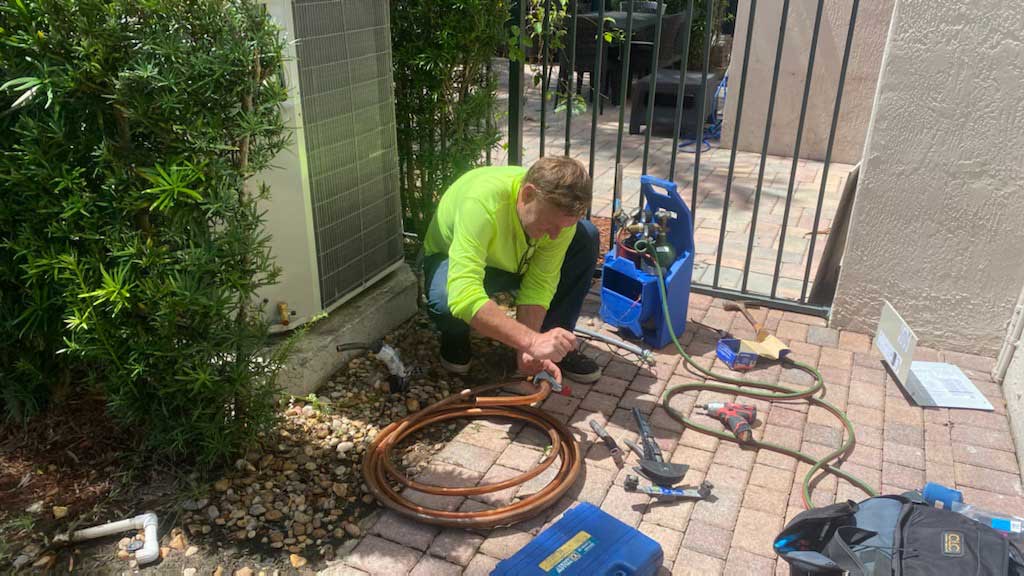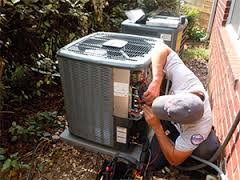

Consistently changing your air filters is a crucial the simplest but most vital tasks in maintaining the efficiency and lifespan of your air conditioning system. Air filters are essential in maintaining the air in your home pure by collecting dust, pollen, pet dander, and various airborne particles. Yet, over time, these filters become clogged with debris, hindering airflow and leading to your AC system to operate harder than required.
Dirty filters serve as a common cause for reduced efficiency and increased energy consumption in air conditioning systems. If airflow is restricted, the system needs to exert more effort in pushing air through the clogged filter, resulting in higher energy bills and possible strain on the components of the AC unit. Additionally, restricted airflow can result in uneven cooling throughout your home, with some rooms being warmer than others.
To avoid these issues and maintain optimal performance from your AC system, it's crucial to replace your air filters on a regular basis. Experts typically recommend replacing filters every 1 to 3 months, although this timeframe might vary depending on factors such as the type of filter used, the level of airborne contaminants in your home, and whether you have pets.
Thankfully, replacing air filters is a reasonably simple and inexpensive task which can have a notable impact on the efficiency of your AC system. Most filters are easily accessible and are replaced in a matter of minutes without the need for professional assistance. Many homeowners find it helpful to set reminders or schedule regular filter replacements to make sure they don't forget this vital maintenance task.
By routinely replacing your air filters, you can help avoid costly repairs, enhance indoor air quality, and prolong the lifespan of your air conditioning system. Not only will you enjoy a greater comfortable living environment, but you'll also reap the benefits of lower energy bills and reduced energy consumption. So, don't overlook the importance of this seemingly small maintenance task – make it a priority to replace your air filters regularly. Your AC system will thank you for it!
Maintaining the air conditioning system involves more than just changing filters and adjusting thermostats. One often overlooked aspect of AC maintenance is ensuring that the outdoor unit remains clear of debris, plants, and other obstructions. This basic yet crucial step can significantly impact the performance and longevity of the AC system.
The outdoor unit, also known as the condenser unit or compressor, plays a vital role in the cooling process by dissipating heat from inside the home to the outdoors. To accomplish this, the unit relies on unimpeded airflow around its coils. When debris accumulate around the unit, it can restrict airflow, leading to several potential issues.
First and foremost, restricted airflow can cause the AC system to work harder than necessary to achieve the desired temperature, resulting in increased energy consumption and higher utility bills. Additionally, the compressor may overheat, leading to premature wear and potential breakdowns. In extreme cases, restricted airflow can cause the system to freeze up or malfunction entirely, requiring costly repairs or replacement.
To avoid these problems, it's essential to keep the outdoor unit clear of any junk, plants, or obstructions. Regularly inspect the area around the unit and remove any junk that has accumulated. Trim back vegetation to ensure they do not encroach upon the unit and hinder airflow. If you live in an area prone to strong winds or storms, be especially vigilant about checking for junk after inclement weather.
Taking the time to keep the outdoor unit clear may seem like a minor chore, but it can have a significant impact on the efficiency and performance of your AC system. By ensuring proper airflow, you can help extend the lifespan of the AC unit, reduce energy consumption, and maintain a comfortable indoor environment. So, make it a habit to keep the area around the outdoor unit clear – your AC system will thank you for it.
Regular expert maintenance is crucial to keep your air conditioning system running smoothly and efficiently throughout the year. While replacing filters and keeping the outdoor unit clear are important tasks that homeowners can tackle themselves, scheduling a professional inspection and tune-up annually is equally crucial for optimal performance and longevity of the AC system.
Having a qualified technician inspect your AC system ensures that any potential issues are identified and addressed before they escalate into major problems. During an maintenance visit, the technician will thoroughly inspect all components of your AC system, including the indoor and outdoor units, coils, refrigerant levels, electrical connections, and thermostat settings. They will also clean the coils and other components as needed to improve efficiency and airflow.
One of the primary benefits of professional maintenance is the early detection of any issues that could affect the performance of your AC system. Whether it's a worn-out part, leaking refrigerant, or a malfunctioning component, catching these problems early can prevent costly repairs down the line and extend the lifespan of your AC unit.
In addition to identifying and addressing any existing issues, regular maintenance helps ensure that the AC system continues to operate at peak efficiency. A well-maintained system requires less energy to cool the home, resulting in lower utility bills and reduced energy consumption. Moreover, regular maintenance can help prevent breakdowns and emergency repairs, providing you with peace of mind during the hottest months of the year.
Furthermore, scheduling professional maintenance can also help maintain the warranty on the AC system. Many manufacturers require proof of annual maintenance to keep the warranty valid, so skipping this crucial step could void your warranty and leave you responsible for any future repairs or replacements.
In conclusion, scheduling professional maintenance for your AC system is a smart investment in the comfort and efficiency of the home. By having a qualified technician inspect and tune up the AC system annually, you can catch any potential issues early, keep your system running efficiently, and enjoy reliable cooling all year round.


Ensuring the seal of ductwork is an crucial yet often overlooked aspect of maintaining an efficient and cost-effective HVAC system. Leaky ducts can lead to significant energy loss, causing your heating and cooling systems to work harder than necessary and increasing your energy bills. By investing the time to seal any leaks in your ductwork, you can improve the efficiency of your HVAC system and save money on energy costs.
Ductwork is responsible for distributing heated or cooled air throughout your home, ensuring that every room remains comfortable year-round. However, when ducts develop leaks or gaps, conditioned air can escape into unconditioned spaces such as attics, crawlspaces, or wall cavities. This not only wastes energy but also reduces the effectiveness of your HVAC system, as less conditioned air reaches its intended destination.
Sealing ductwork involves identifying and repairing any leaks or gaps using specialized sealants or duct tape. Common areas where duct leaks occur include joints, seams, and connections between duct sections. In some cases, ductwork may also become damaged or deteriorate over time, leading to additional leaks that need to be addressed.
Improving the efficiency of your ductwork can have a significant impact on your energy bills and overall comfort. According to the U.S. Department of Energy, sealing duct leaks can reduce heating and cooling costs by up to 20%, making it a cost-effective way to improve the performance of your HVAC system.
In addition to saving money on energy costs, sealing ductwork can also improve indoor air quality by reducing the infiltration of dust, allergens, and pollutants from outside. By preventing these contaminants from entering your home through leaky ducts, you can create a healthier and more comfortable living environment for you and your family.
In conclusion, ensuring the seal of ductwork is a simple yet effective way to improve the efficiency of your HVAC system and reduce energy bills. By identifying and sealing any leaks in your ductwork, you can ensure that conditioned air reaches its intended destination, saving money and improving indoor comfort in the process.
Using an programmable thermostat is an intelligent and convenient way to optimize energy usage and maintain comfort levels in your home. By programming the thermostat to adjust temperatures based on your schedule, you can ensure that your heating and cooling systems operate efficiently while minimizing energy waste.
One of the key benefits of a programmable thermostat is the ability to set different temperature settings for different times of a day. For example, you can program the thermostat to automatically raise your temperature during the day when no one is home and lower it before you return. This prevents your HVAC system from working overtime to cool or heat an empty house, saving energy and reducing utility costs.
Additionally, programmable thermostats offer flexibility to accommodate changes in the schedule. Whether you're going on vacation, working late, or enjoying a weekend getaway, you can easily adjust your thermostat settings to match your activities and preferences. Some advanced models even allow you to control your thermostat remotely using a smartphone app, giving you added convenience of managing your home's temperature from anywhere.
Another advantage of using a programmable thermostat is the potential for improved comfort and indoor air quality. By maintaining consistent temperature settings, you can avoid temperature fluctuations that may occur with manual thermostat adjustments. This creates a more pleasant living environment for you and your family while also reducing the workload on your HVAC system.
Furthermore, using an programmable thermostat aligns with energy-saving recommendations from organizations such as the U.S. Environmental Protection Agency (EPA) and the Department of Energy. These agencies suggest setting your thermostat to higher temperatures in the summer and lower temperatures in the winter to save energy and reduce greenhouse gas emissions.
In conclusion, using a programmable thermostat offers numerous benefits, including energy savings, convenience, and improved comfort. By programming your thermostat to adjust temperatures based on your schedule, you can maximize efficiency, minimize energy waste, and enjoy greater control over your home's indoor climate. It's an easy yet effective way to save money and reduce your environmental footprint while maintaining a cozy living space.


Keeping window blinds or curtains closed during hot days is a smart and effective strategy to manage indoor temperatures and lighten the load on your air conditioning system. By blocking out sunlight, you can significantly reduce the amount of heat that enters your home, creating a more comfortable environment while also saving energy and money.
Sunlight streaming through windows may seem harmless, but it actually contributes to the heat buildup inside your home, especially during peak times of the day. Without proper shading, sunlight can penetrate your windows, warming up the interior spaces and forcing your AC system to work harder to maintain a comfortable temperature.
Closing window blinds or curtains serves as a simple yet effective barrier against unwanted heat gain. By keeping these window coverings closed, you can block out much of the sun's rays, preventing them from heating up your home's interior. This helps to maintain cooler indoor temperatures and reduces the need for constant air conditioning, ultimately lowering your energy consumption and utility bills.
Additionally, closing blinds or curtains can help protect your furnishings and belongings from sun damage. Prolonged exposure to sunlight can cause furniture, flooring, and other household items to fade or deteriorate over time. By minimizing sunlight exposure through proper shading, you can preserve the integrity and longevity of your belongings while maintaining a more comfortable indoor environment.
It's worth noting that while keeping blinds or curtains closed during hot days is beneficial, you don't have to keep them closed all the time. You can still enjoy natural light and ventilation by opening them during cooler parts of the day or when the sun isn't directly shining on your windows. This allows you to strike a balance between natural lighting and temperature control, optimizing comfort and energy efficiency throughout the day.
In conclusion, keeping blinds or curtains closed during hot days is a simple yet effective way to reduce heat gain, lighten the load on your AC system, and save energy and money. By blocking out sunlight, you can create a more comfortable indoor environment while also protecting your belongings from sun damage. It's a small adjustment that can make a significant impact in your home's comfort and energy efficiency. In doing so you won't have to call Fuji Air LLC in Hollywood, Florida
Sure, here's the provided text with spintax applied:
In the hot heat of summer, minimizing heat-generating activities is often a wise strategy to relieve the strain on your air conditioning system and keep your home cool and comfortable. By being mindful of when you engage in activities that produce heat, like cooking or running hot appliances, you can reduce the strain on your AC system and potentially lower your energy bills.
Preparing meals is one of the most common sources of indoor heat, particularly with stoves, ovens, or other cooking appliances. When you cook, the heat generated from these appliances quickly elevates the temperature inside your home, causing your air conditioner to work harder in maintaining a comfortable environment. To minimize this effect, consider preparing meals during the cooler parts of the day, like early morning or late evening, when outdoor temperatures are lower reducing the need for your AC system as hard in keeping your home cool.
Similarly, running hot appliances such as clothes dryers, dishwashers, or even computers and televisions can add to indoor heat buildup. To reduce the strain on your AC system, try to schedule these activities for times when outdoor temperatures are cooler or when your AC system isn't already working hard in combating the heat of the day. For example, running your dishwasher or doing laundry in the evening may assist prevent unnecessary heat gain during peak daytime hours.
Being aware of when you perform heat-generating activities, you may help your air conditioning system operate more efficiently thereby saving energy and money as a result. Additionally, diminishing indoor heat buildup creates a more comfortable living environment for you and your family, allowing you to enjoy your home without feeling overheated or relying solely on your AC system to keep cool.
In conclusion, reducing heat-generating activities during the hottest parts of the day proves to be a straightforward yet efficient way to reduce the strain on your air conditioning system and maintain a comfortable indoor environment. By cooking, running hot appliances, and participating in other heat-producing activities during cooler times of the day, you may help your AC system operate more efficiently and potentially save on energy costs whilst remaining cool and comfortable at home.
